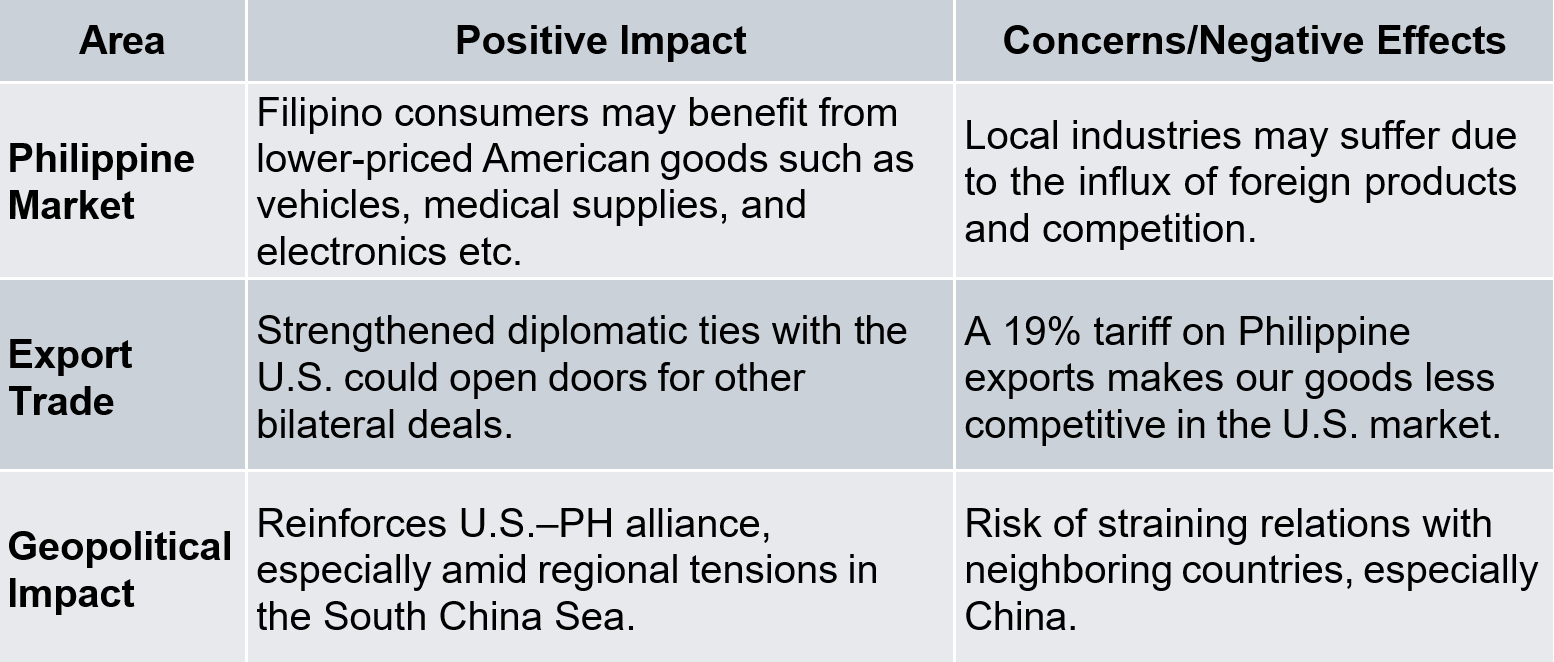July 25, 2025
News & Updates
News
Source: News5 Everywhere (via Maricel Halili – Facebook post)
Date Posted: July 22, 2025
The article discusses a recent trade announcement made by former U.S. President Donald Trump regarding a new trade deal between the United States and the Philippines. According to Trump’s post on Truth Social, the U.S. will start imposing a 19% tariff on Philippine exports, while the Philippines will grant zero tariffs on American goods entering the country. The article also highlights that this agreement includes aspects of military cooperation between both nations.
U.S. President Donald Trump will impose a revised 19% tariff on Philippine exports in exchange for the Philippines granting zero tariffs on American goods entering the country, following Philippine President Marcos’ “beautiful visit” to the White House on Tuesday, July 23, 2025.
The new tariff rate is slightly below the 20% rate announced by Trump earlier this month but above the 17% rate set in April of this year, as part of what Trump called “reciprocal tariff rates” for countries with U.S. trade relations. The 19% rate matches Indonesia’s and undercuts Vietnam’s 20% rate.
Upon verification from credible global news sources such as Reuters, Associated Press (AP), and CBS News, it appears that this announcement is indeed authentic and was made publicly during the recent meeting between President Ferdinand Marcos Jr. and U.S. President Donald Trump in Washington, D.C.
But based on current reports, this deal is still at the preliminary or framework stage. No official or complete documentation of the trade agreement has been made public, and many of the terms remain broad or open to interpretation. In short, the agreement may still evolve and is not yet legally binding as of now.
President Marcos recently visited U.S. President Donald Trump, aiming to forge improved trade relations with what he referred to as the Philippines’ “strongest, closest and most reliable ally.” While the visit reflected a renewed interest in strengthening bilateral economic cooperation, no official trade deal has been finalized as of yet. Discussions remain in their early stages.
Philippine consumers may benefit immediately from the potential removal of taxes on American goods entering the country, including more reasonably priced access to gadgets, cars, and medical supplies. However, the long-term effects on local industry may be quite worrisome. Cheaper imports from the US will lead to more localized competition, which could put pressure on Philippine farmers and businesses who might not be able to match prices or production capacity.
Furthermore, there is an apparent imbalance in the proposed arrangement. The Philippines is considering eliminating tariffs on American goods, a 19% levy would still apply to its own exports to the US. Even though this action might promote international investment and strengthen diplomatic ties, it also leaves the Philippine economy vulnerable, particularly in the lack of strong safeguards for local industries. The trade agreement may jeopardize the nation's long-term economic stability and industrial competitiveness in the absence of explicit legislative measures to protect and promote these industries.
